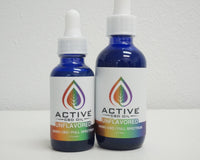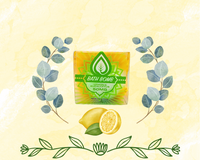So, we already discussed Adding CBD Isolate to a Larger Base to create your own CBD topical. However, creating your own CBD tincture is just as easy with isolate.
Each gram of CBD isolate usually contains at least 998mg of CBD and is a white powder substance. The easiest way to measure how CBD isolate is to first add it to a larger base. This will allow you to know exactly how much CBD you are consuming.
So you've bought some CBD isolate, but how do you use it in a larger recipe?
Let's say you have some CBD isolate and want to make some regular CBD oil tincture with it. You could just mix the CBD right into your regular tincture, but that's not how you're supposed to do things. It would likely be inefficient, making the whole process more costly for one thing.
Secondly, when batches are tested at labs after processing they will most likely fail because there is no way to know how much cannabinoid content is actually being extracted from the plant material (like hemp flowers) unless you purify it yourself by taking it up in something like an oil or high proof alcohol solution.
And even if somehow your isolated batch did measure out at exactly 100mg of CBD, how would you know that the other ingredients in your CBD tincture (such as MCT oil and glycerin) had not adversely affected how much was actually absorbed by the body?
When doing this kind of work it's very important to understand how cannabinoids dissolve.
Cannabis is a very special plant with some unique properties; one of those properties involves how it dissolves into fats and lipids such as those found in oils and solvents like isopropyl alcohol. This phenomenon is called 'hydrophobicity'.
In plain English, that means that cannabis likes to mix with oily substances, but pretty much hates water! That makes extracting cannabinoids very different from most other plants and how we handle them differs greatly depending on what form they are in when you start.
Cannabis is not water soluble
Cannabis plant matter is not soluble in water or oil, but it is very much soluble in alcohol and other non-polar solvents like chloroform and ether.
That's how we make cannabis tinctures and how we test them; we soak the cannabis material in a vessel containing those solvents for several minutes and then carefully remove all of the solvent (leaving behind only what was inside).
One of the reasons that 'true' tincture is such an effective medicine is because cannabinoids dissolve into it as easily as if they were introducing themselves to their soulmate; this means they're bioavailable (easy to absorb).
It also means that whatever you don't use gets absorbed into the alcohol along with whatever other goodies were in that solvent, which will then be removed from your tincture when you take it. This is how we can safely extract a plant and know how much of its potency went into our final product.
That being said, how do we incorporate CBD isolate into a larger batch of something if we need to dissolve it first? We have two options: water or oil. Even though there are many compounds within cannabis that hate water, cannabinoids don't mind it at all because they spend so much time dissolved in alcohols already.
In fact, you could even say that they're well suited to be dissolved in just about anything! That's why ice-water hash methods work so well and why we can use fat-based solvents; how these processes work is actually very different even though they all involve cannabis extracted into water.
For the purposes of this example let's assume hemp seed oil, because it makes more sense in a cannabis tincture anyhow (we want to add CBD isolate to an existing solution, not make another one).
Or select one of our preloaded kit options below where we provide the isolate and the bottles (just add MCT oil available at any grocery store or Amazon).
Kit #1 (200mg of CBD per tincture when mixed)
Includes: 1 gram of CBD isolate and 5 empty bottles and droppers
Kit #2 (500mg of CBD per tincture when mixed)
Includes 5 grams of CBD isolate and 10 empty bottles and droppers





Each 1 ml of liquid will contain 16mg of CBD. The typical glass dropper will contain 1 ml of liquid.
-
Olive Oil
-
Vegetable Oil
Adding CBD Isolate into a Larger Base (Topical)
Now that you have the basic recipe down, you can further customize your CBD tincture by adding different essential oils, different ratios of other base oils, as well as adding other cannabinoids such as CBG. You can even experiment with custom potency formulations with the help of our Confused by the Math? Blog. For more CBD isolate recipes, check out our full list of recipes Here: CBD Isolate Recipes. If you need assistance with calculations for changing the concentration (more and less potent tincture in a few drops) or using a different amount of oil, check out this link for: Isolate Math Help.
Do you have a question or comment about CBD? Let us know, and we will respond right away. In the meantime, sign up for our newsletter and visit our website DiscoverCBD.com regularly for the latest updates on research, legislation, and other news impacting you and cannabidiol.



























